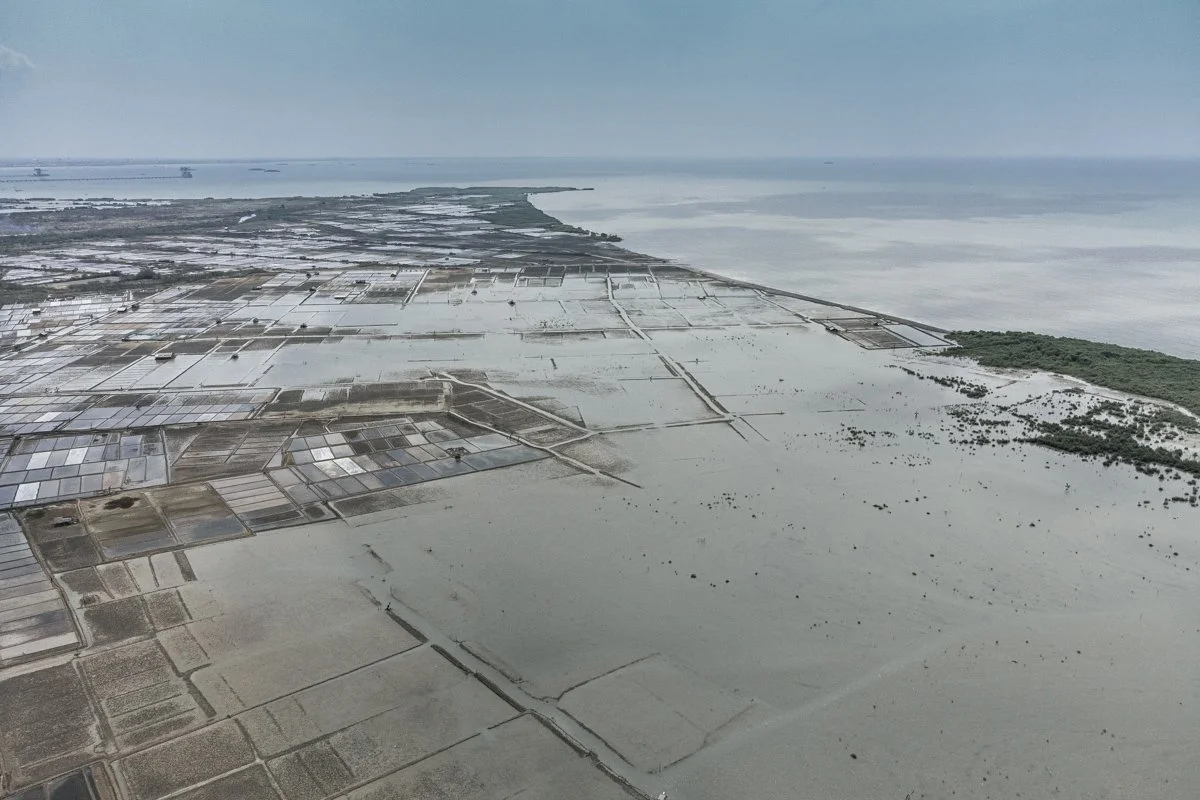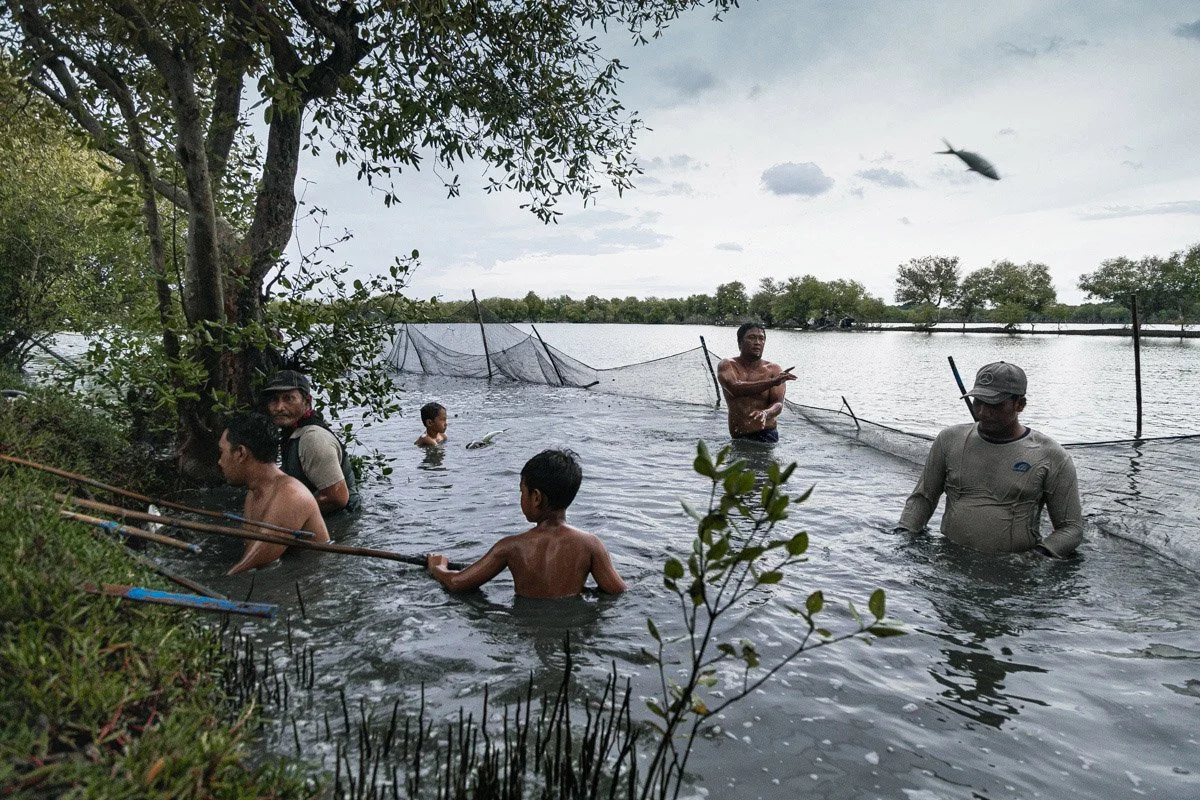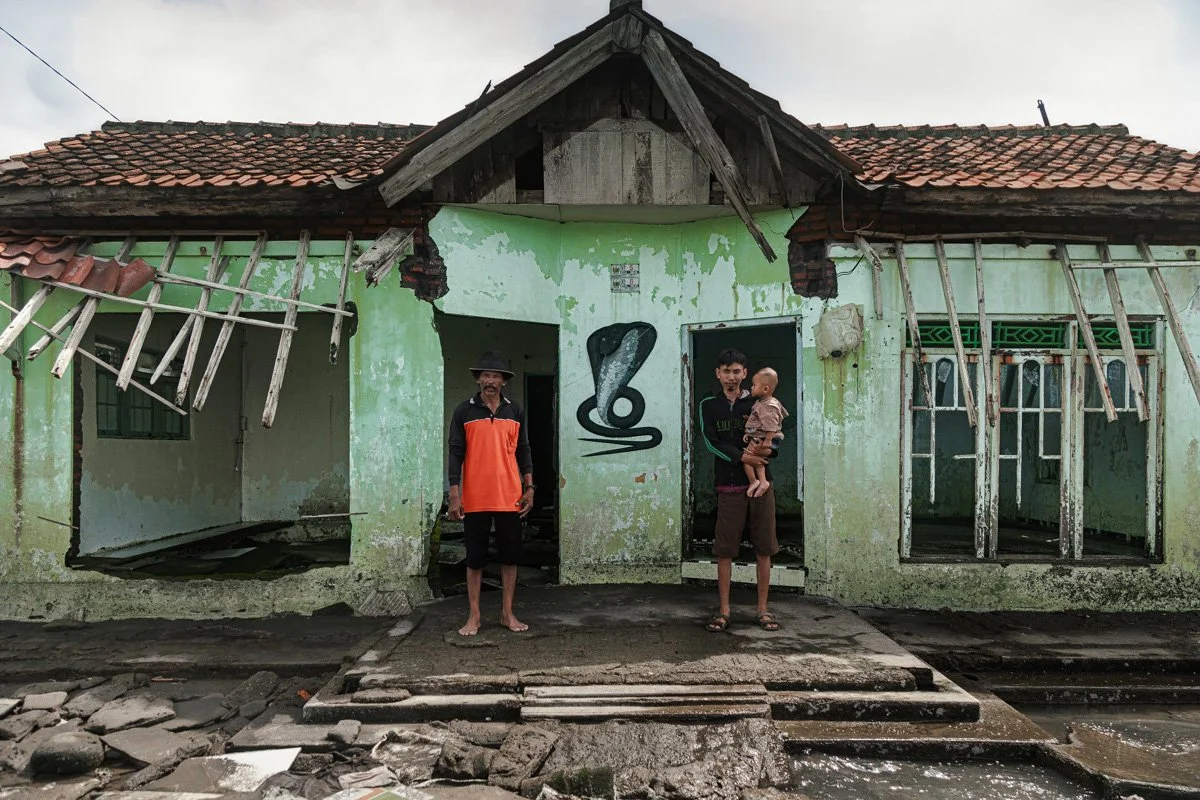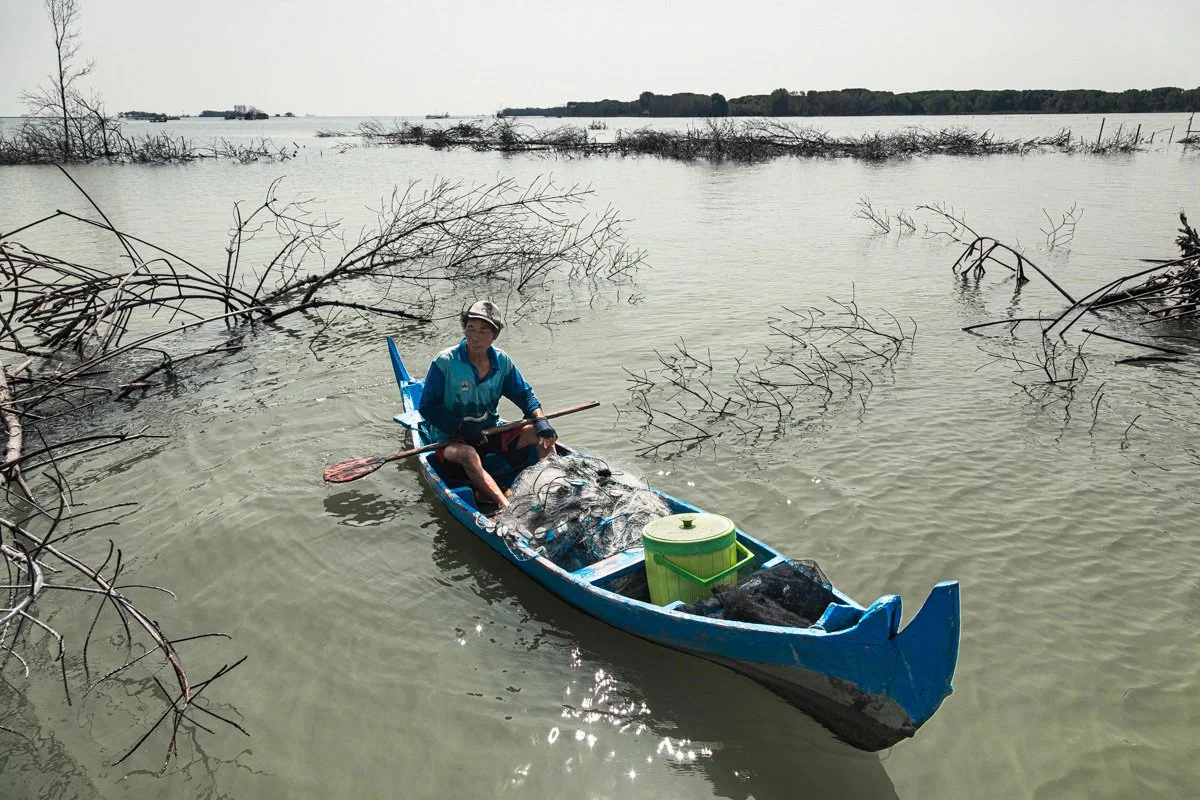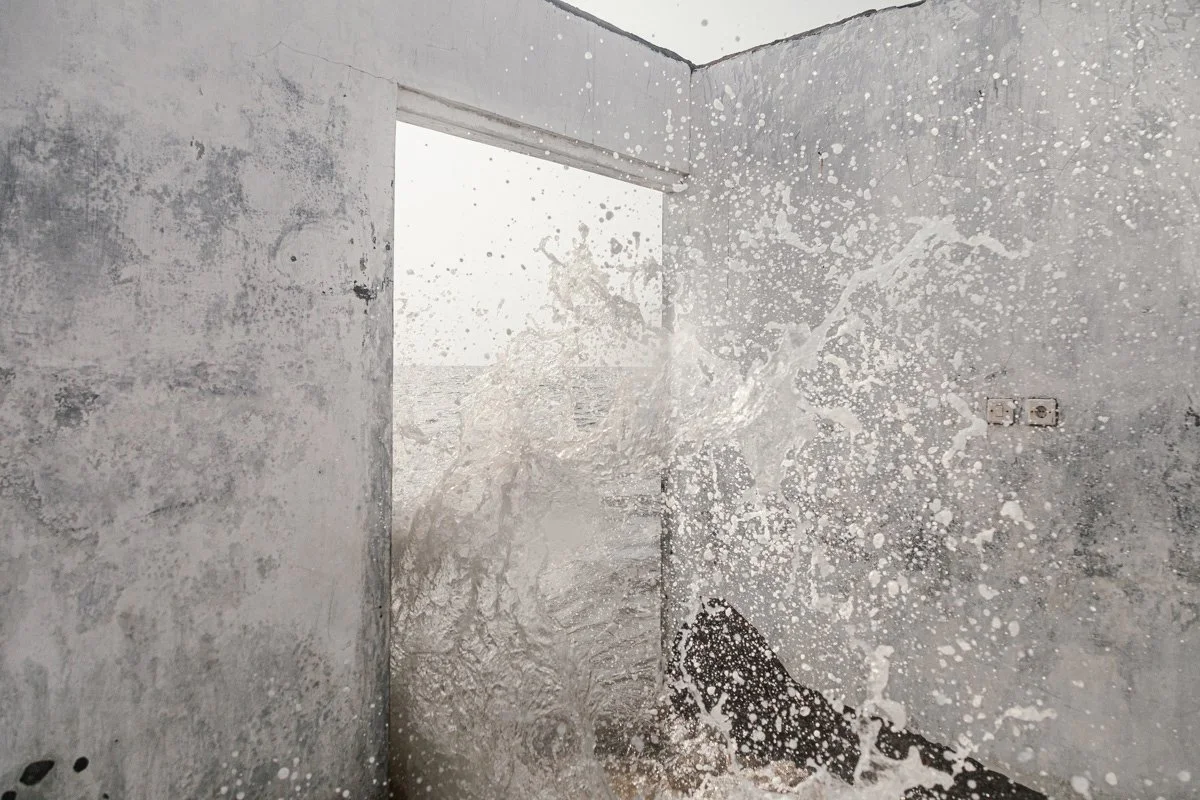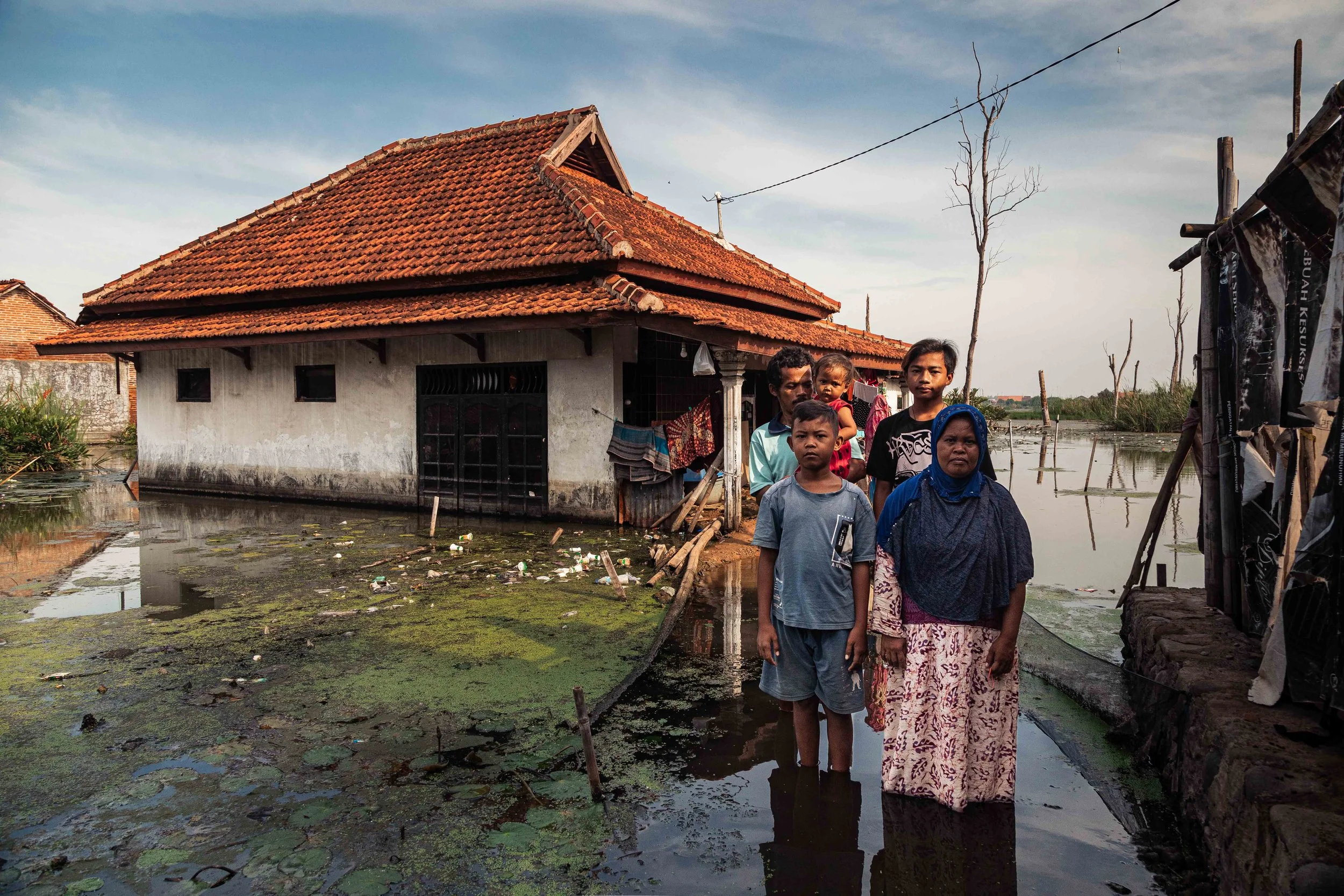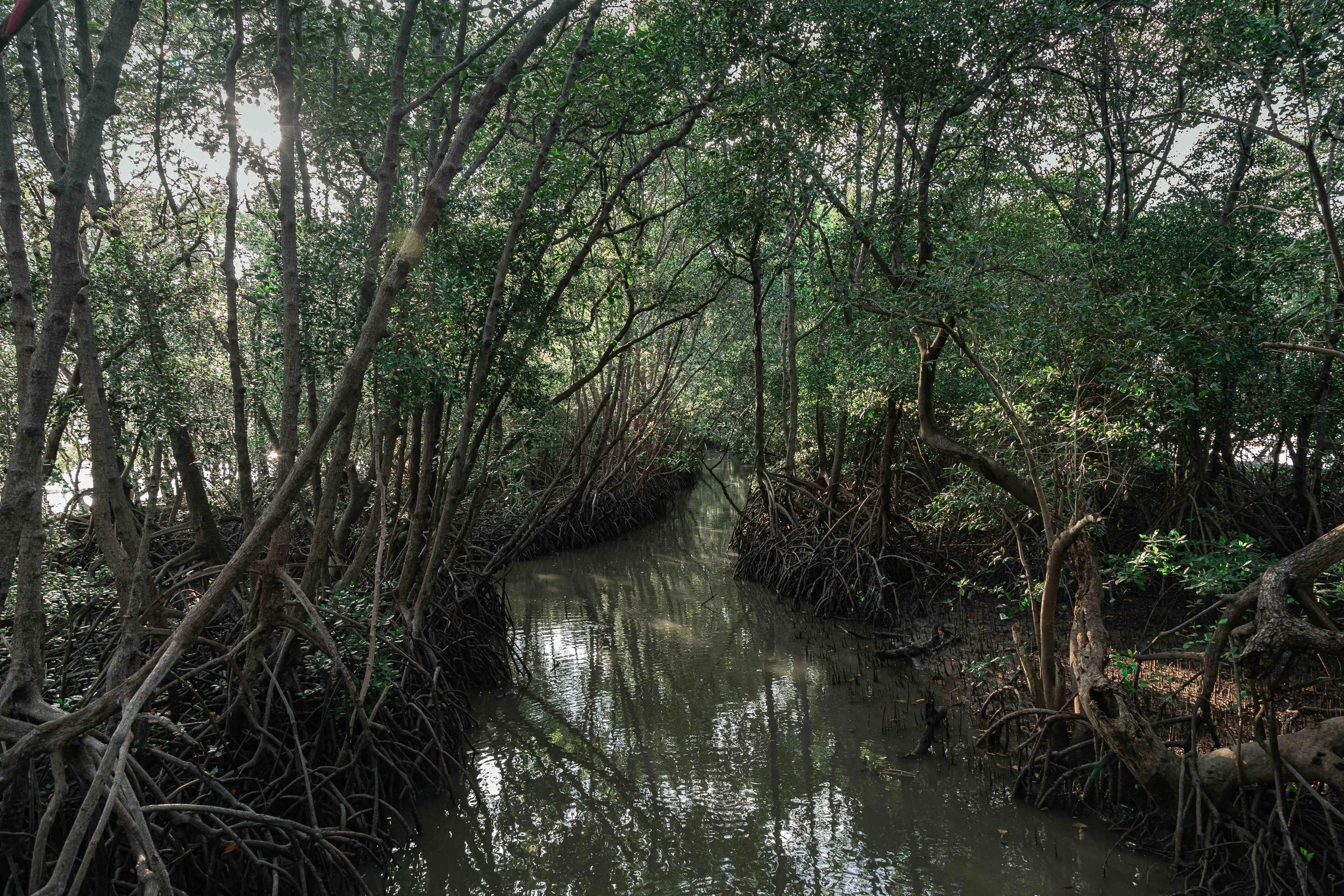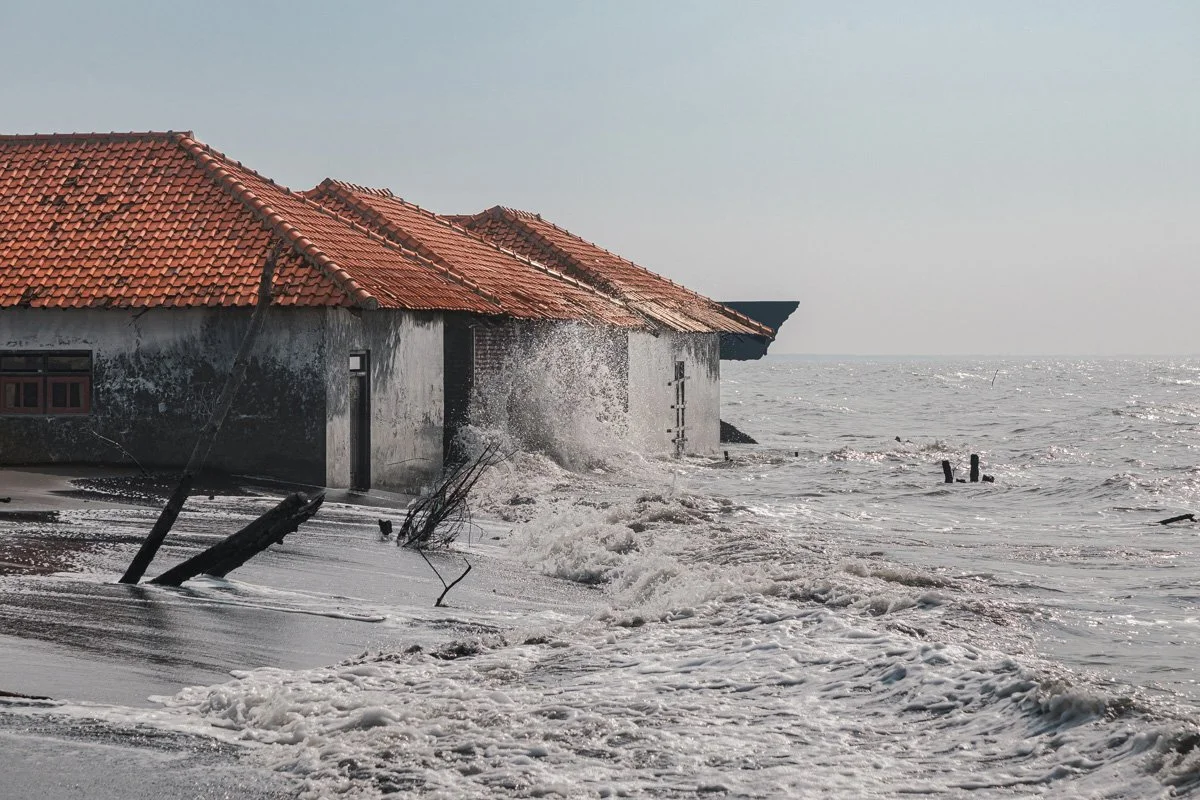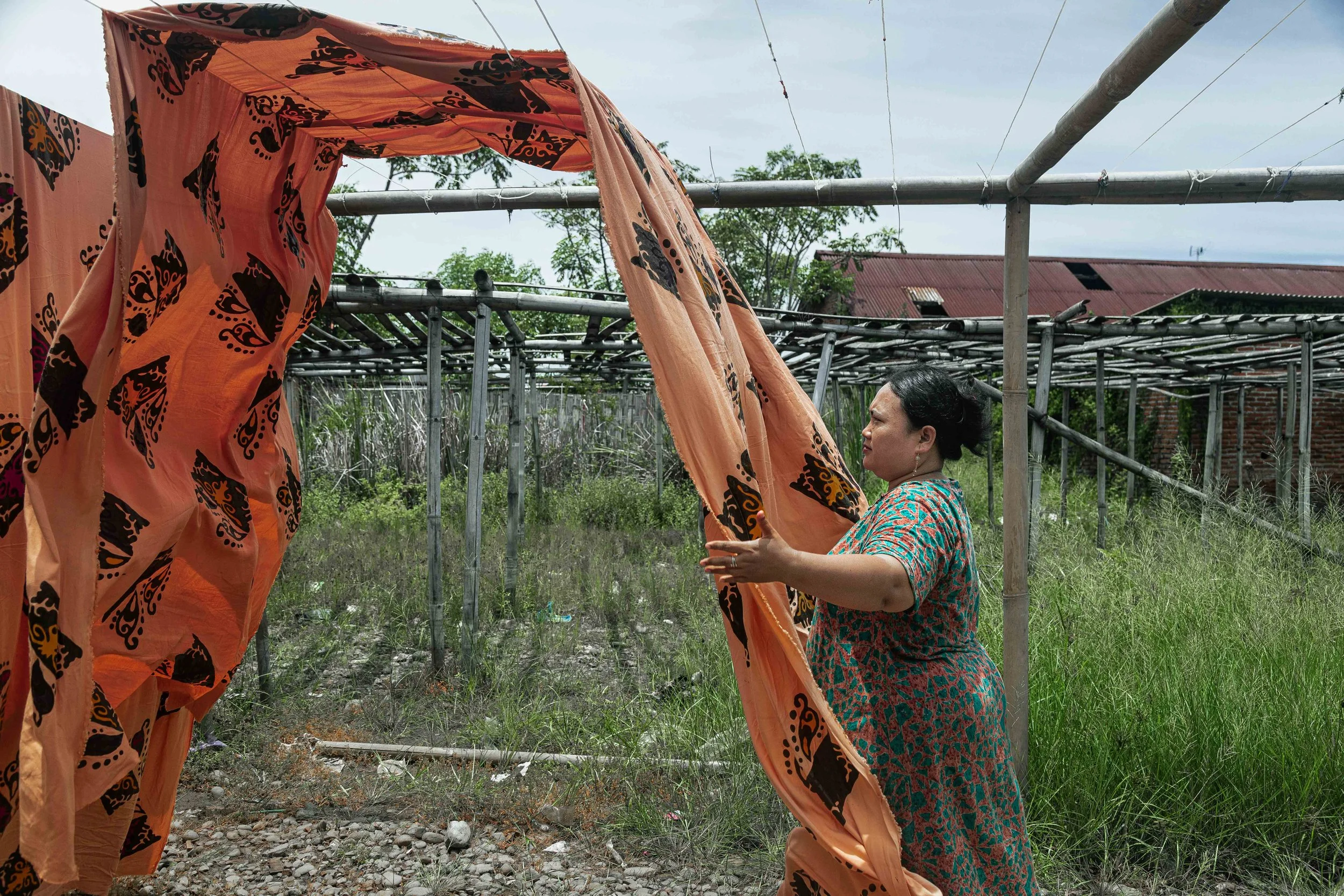Land of the Sea
(2020)
Coastal flood disrupts productive local economies for many home industry batik artisans in a prominent batik producer city, Pekalongan. It interferes with the drying process and causes a derogation in the fabrics' color absorption. Residents were also facing saltwater intrusion into freshwater supplies and destroying a once fertile land. Many were stripped from their homes due to the permanent inundation of seawater.
Indonesia is one of the countries hardest hit by climate change. It is affecting every aspect of life: cultural, historical, economic, social, tourism, and causing a humanitarian crisis. According to Climate Central's report entitled “Flooded Future: Global vulnerability to sea level rise worse than previously understood”, around 23 million coastal residents in Indonesia are at risk of annual sea flooding by 2050. The archipelagic country has more than 17.000 islands and the majority of them are on the brink of inundation by rising sea levels.
If the temperature remains rising, the northern coast of Java will be the first to go. Tragic alteration of the landscape has already happened in several regions like Jakarta, Demak, Pekalongan, and Gresik. Here, displacement due to flooding is not a mere future, it's momentarily befalling.
Demak first encountered tidal floods in 1980. An entire coastal village was evacuated to higher ground because of sea water intrusion. They relocate to an area that is now itself vulnerable to at least annual ocean flooding. As the water continues to rise, chronic flooding will spread thus more dry land will be lost to the ocean. Abrasion has engulfed more than 100 hectares of milkfish embankment in Gresik. And Jakarta, the capital city and home to more than 11 million people, is now known as the fastest sinking city in the world. Almost half of the city now sits below sea level.
The newest report from Intergovernmental Panel on Climate Change (IPCC) from United Nations states that we could not avoid a heating planet and its devastating impacts. Nevertheless, there is a small possibility and understanding the real threat posed by future sea level rise requires a better view of the ground beneath our feet. So, Land of the sea is created for a deeper understanding of what our future could be, to learn from others who have already been impacted but resiliently survive and adapt, and as a wake-up call that this is the time to act. Indonesia is the biggest island nation in the world. But if we continue at this pace, the islands will soon be the sea.
